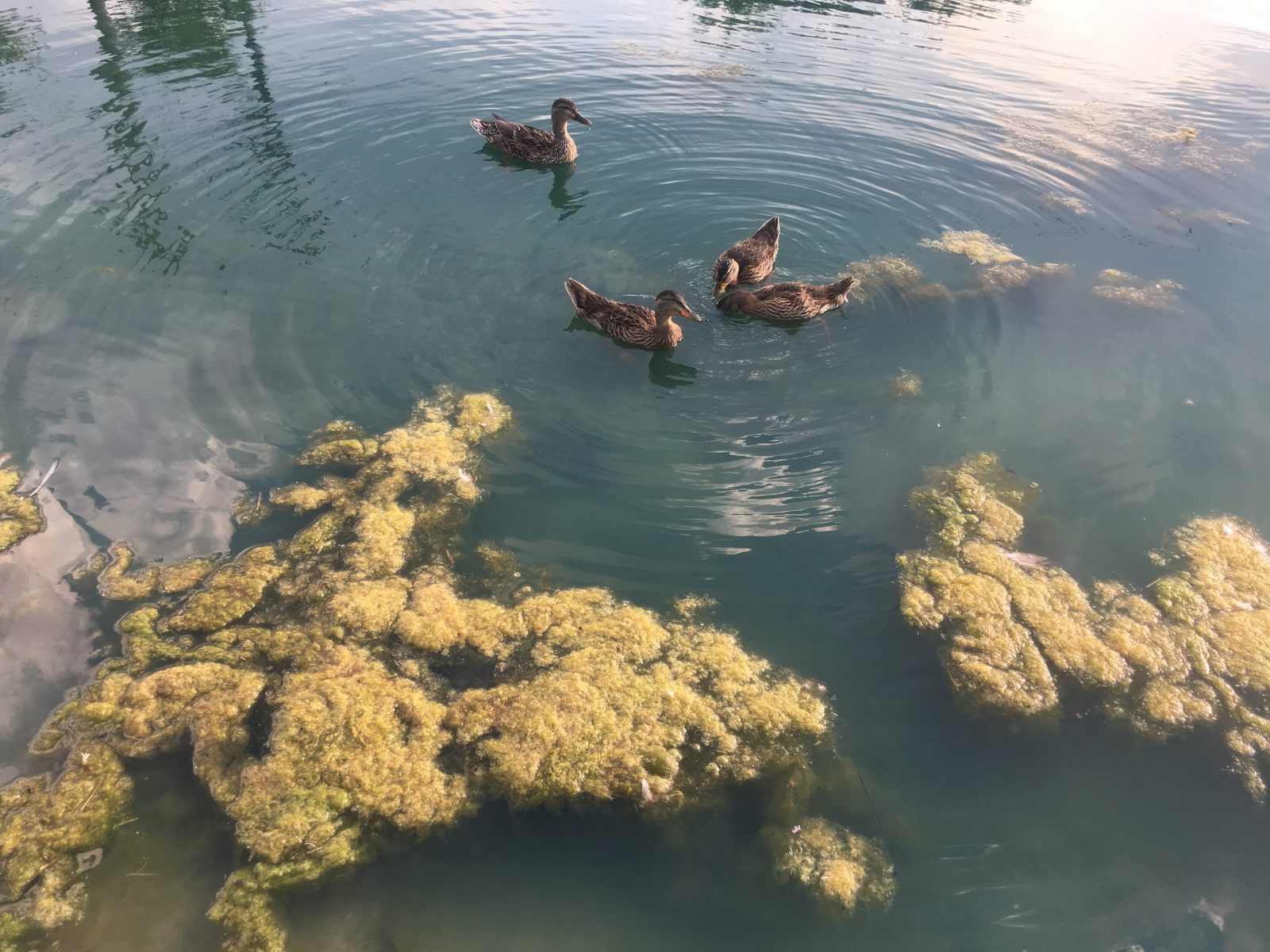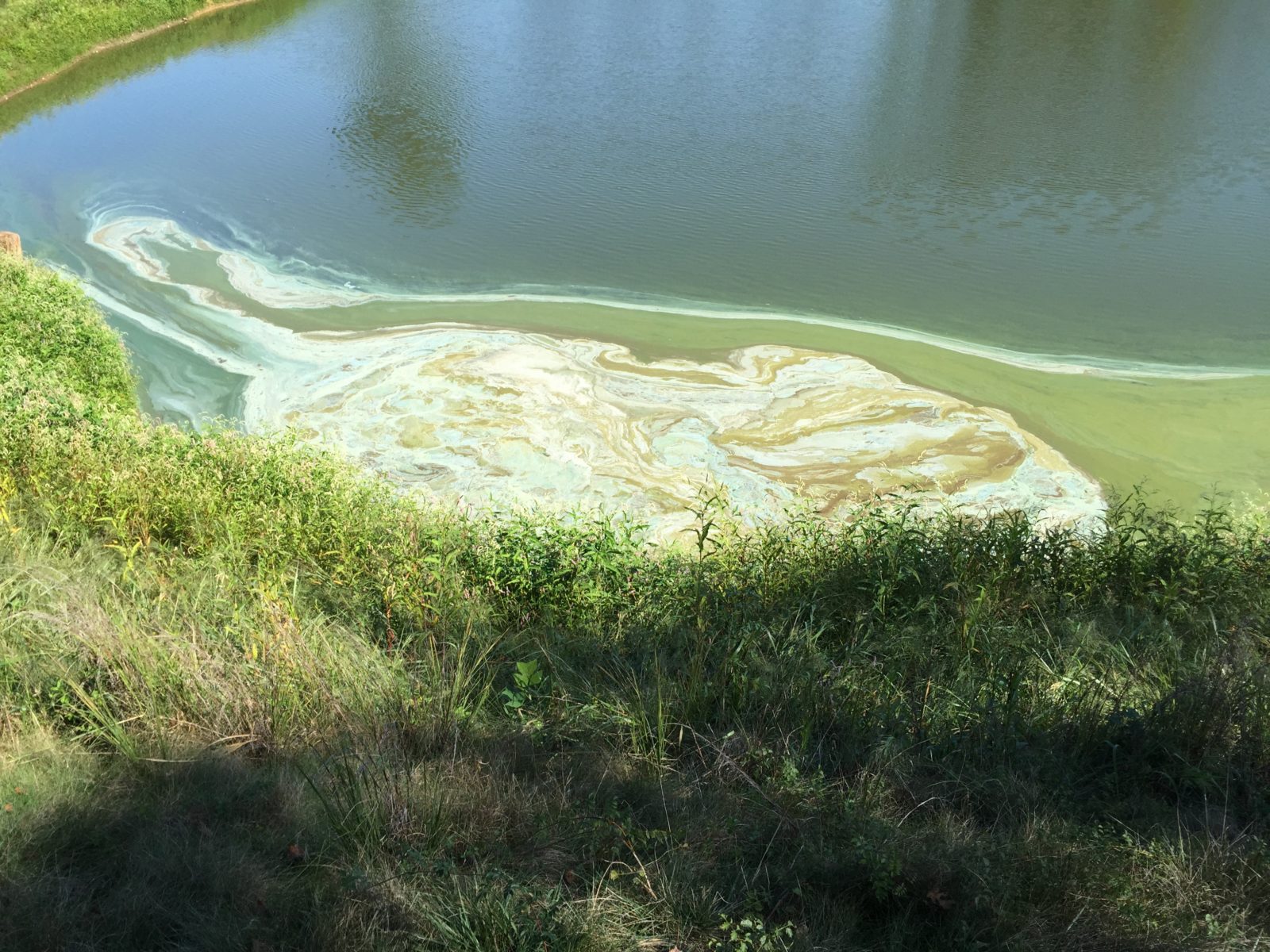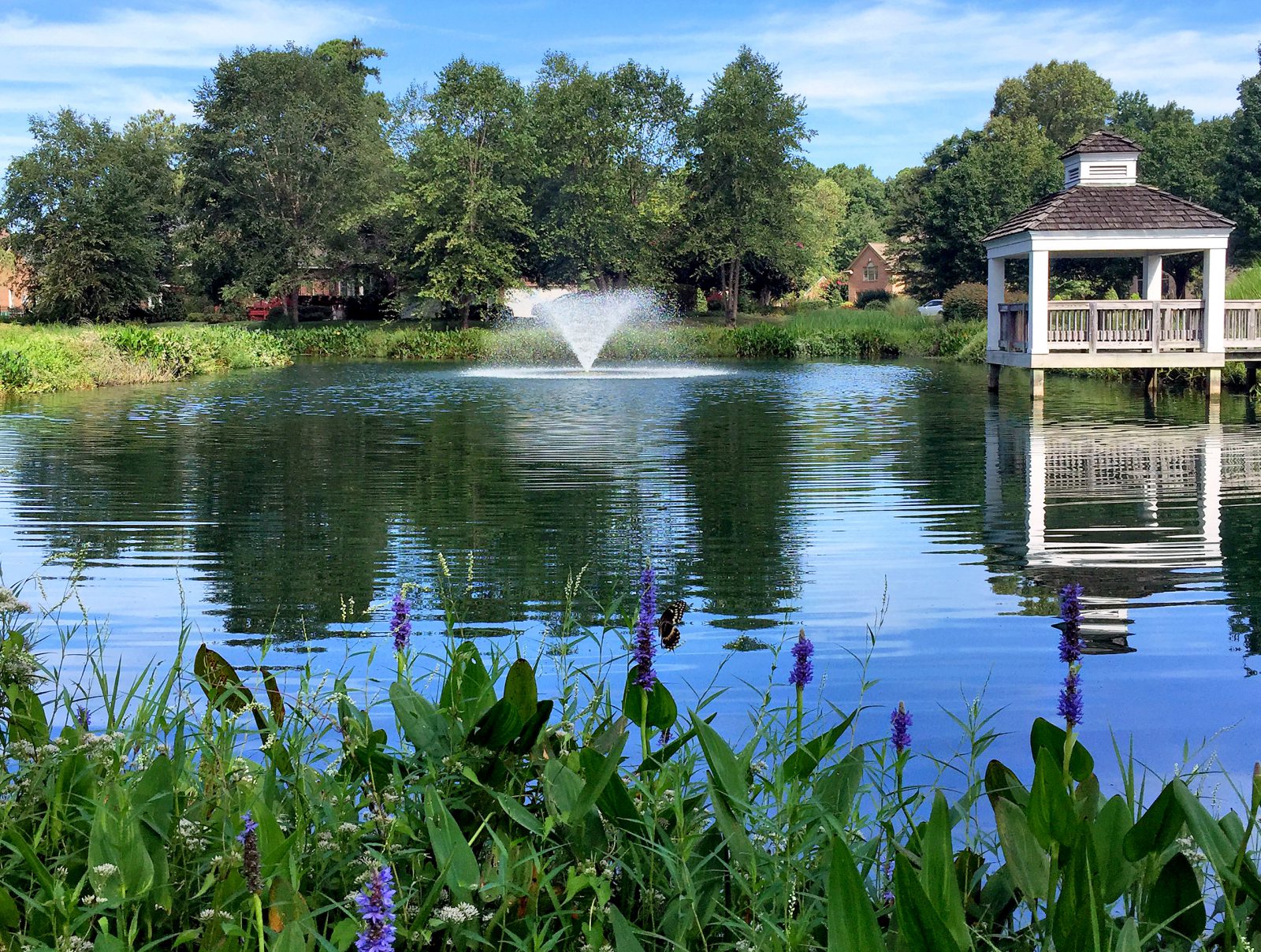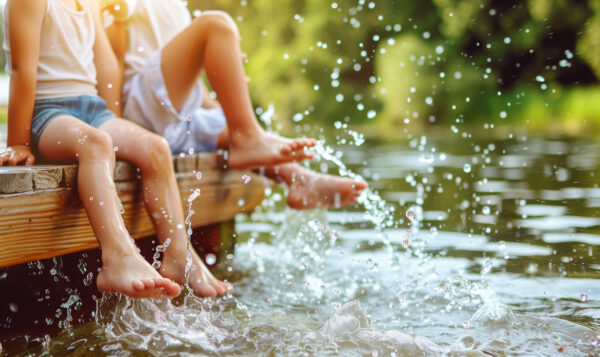
Don’t Let Lake and Pond Algae Ruin Your Summertime Fun
Nothing can ruin swimming, boating or other summer water activities quite like an out of control algae bloom. The warmer weather creates the perfect conditions for nuisance algae to thrive on the surface of lakes and ponds, endangering people and wildlife, and masking the natural beauty of the ecosystem. To successfully limit the impact of pond algae on your summer fun, it’s important to understand the type of algae present, the cause of the algae and the best algae control options for your unique waterbody.
Algae can be identified by its lack of root systems, stems or conductive tissues. Many types of algae are considered either microscopic or filamentous. Microscopic algae are often dispersed throughout the water column, appearing “soupy” or paint-like. Unicellular microscopic algae are a beneficial food source at the bottom of a pond food chain, but can endanger the ecosystem if a bloom gets out of hand. Species like cyanobacteria, often referred to as blue-green algae or a harmful algal bloom (HAB), can produce toxins that have been known to be extremely harmful to humans, pets and other wildlife without proper management. Exposure to HAB toxins can result in liver and kidney toxicity, skin rashes, nervous system problems and other complications. Filamentous algae have no known direct food value to wildlife. It typically grows in thick carpets on the bottom or surface of a waterbody, blocking out sunlight and disrupting dissolved oxygen levels. As a result, native aquatic vegetation and fish may suffer and a fish kill could occur. A licensed professional can help accurately determine the type of algae plaguing your lake or pond and identify water quality problems that may be causing the bloom.
Each and every waterbody contains some level of algae, but nuisance algae blooms typically occur when there is an excess of nutrients, like nitrogen and phosphorous, in the waterbody. Fertilizers, sediment runoff, sewage, grass clippings and animal waste are common sources of these nutrients, which can be naturally and proactively managed through a comprehensive lake management plan.

Steps to Help Improve Water Quality
First, steps should be taken to limit excess sediment and nutrient runoff. Make sure all areas around the waterbody are properly vegetated. Following yard work, leaves, grass and other organic materials should be bagged and removed to prevent them from accumulating and decaying in the waterbody. Pet waste should be disposed of and pets, geese and livestock should be prevented from swimming in the waterbody.
A beneficial buffer of native vegetation should also be allowed to grow 3 to 5 feet from the edge of the lake or pond shoreline. Buffers can help prevent shoreline erosion, deter animals from entering the water and filter trash, debris and pond runoff. A lake or pond manager can recommend beneficial vegetation that is easy to manage and native to your region.

The introduction of an aeration system should be considered to circulate and oxygenate the stagnant body of water, facilitating the conversion of existing nutrients to forms that cannot sustain algae as food. Aeration also helps improve other water quality parameters to enhance the growth of healthy green phytoplankton while reducing nuisance and potentially toxic algae.
Another way to limit algae’s food source is through the introduction of bacteria and enzymes, a process called biological augmentation. The beneficial bacteria can help consume additional pond nutrients that fuel nuisance algae blooms and help facilitate the degradation of the organic nutrient sources. For lakes and ponds with chronic nutrient problems, it’s also worth considering nutrient remediation through the application of phosphorous-locking technologies, such as Phoslock and Alum. When applied by a licensed professional, these products work to rapidly remove free reactive phosphorous from the water column, improving water clarity and permanently reducing phosphorous levels in your waterbody.
By taking the appropriate steps to protect your lake or pond from harmful algal blooms and nuisance algae, you can help ensure the protection of native plants and wildlife and the enjoyment of your waterbody throughout the summer. However, clear sparkling water does not always represent a true picture of health. Regular water quality testing is the foundation of any integrated management program, and will provide information that is essential for the creation of a long-term plan that is unique to your waterbody. Through this approach, the ecological balance and natural beauty of your waterbody can be achieved, maximized and appreciated for years to come.
SOLitude Lake Management is committed to providing full service lake and pond management services that improve water quality, preserve natural resources, and reduce our environmental footprint. Our services include lake, pond and fisheries management programs, algae and aquatic weed control, mechanical harvesting, installation and maintenance of fountains and aeration systems, water quality testing and restoration, bathymetry, lake vegetation studies, biological assessments, habitat assessments, invasive species management and nuisance wildlife management. Lake, pond and fisheries management services, consulting, and aquatic products are available nationwide. Learn more about SOLitude Lake Management and purchase products at www.solitudelakemanagement.com.









